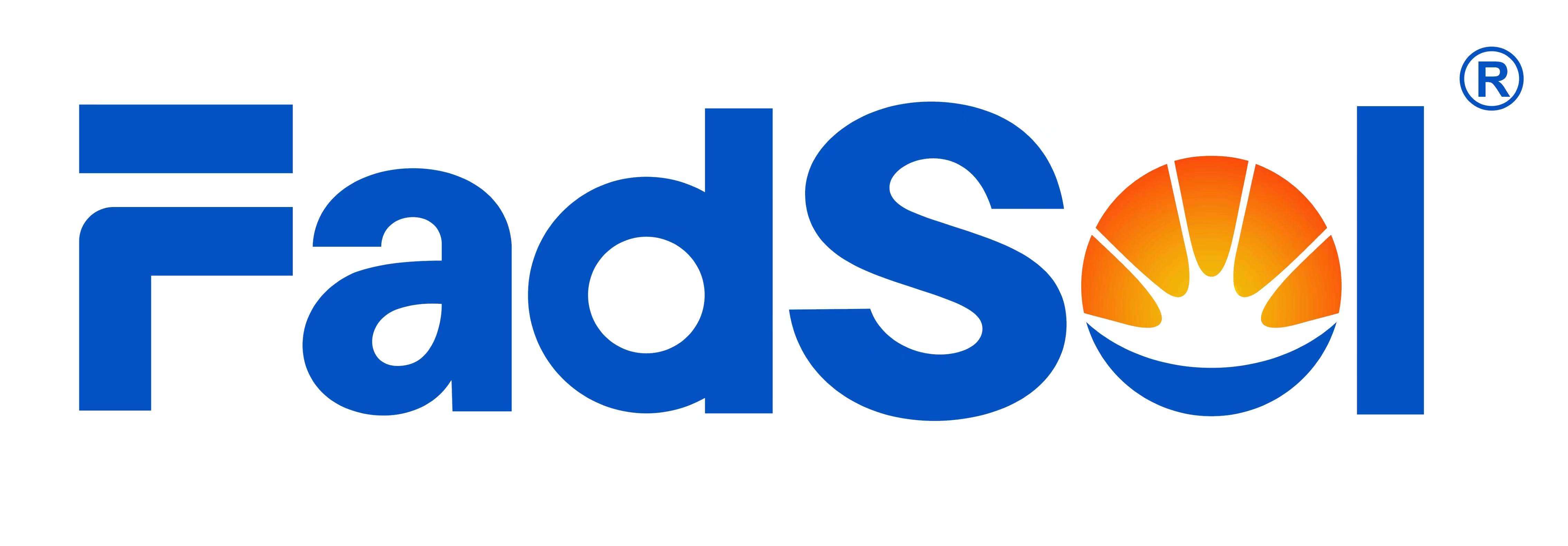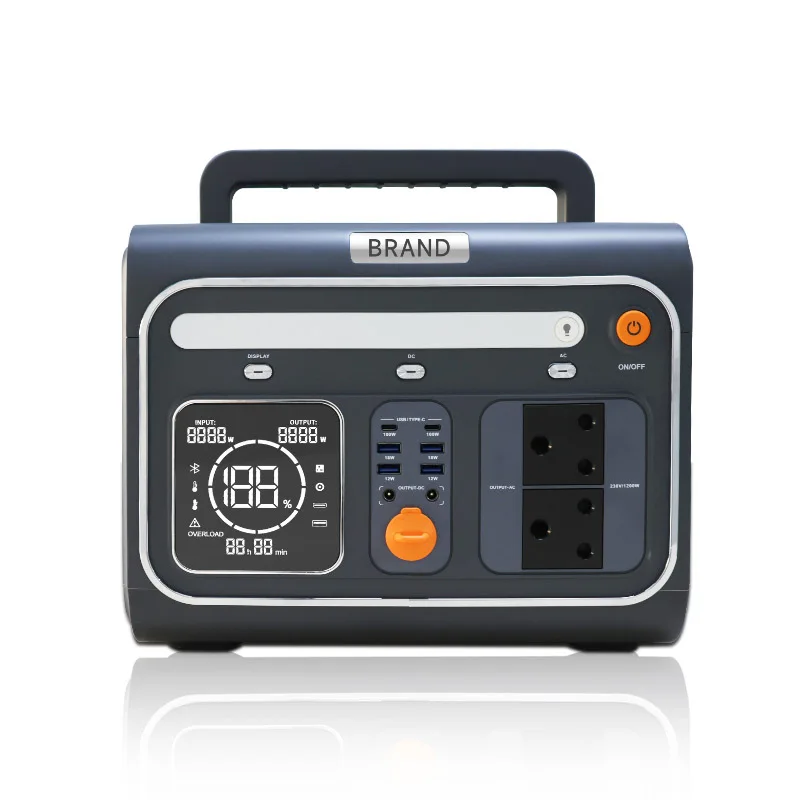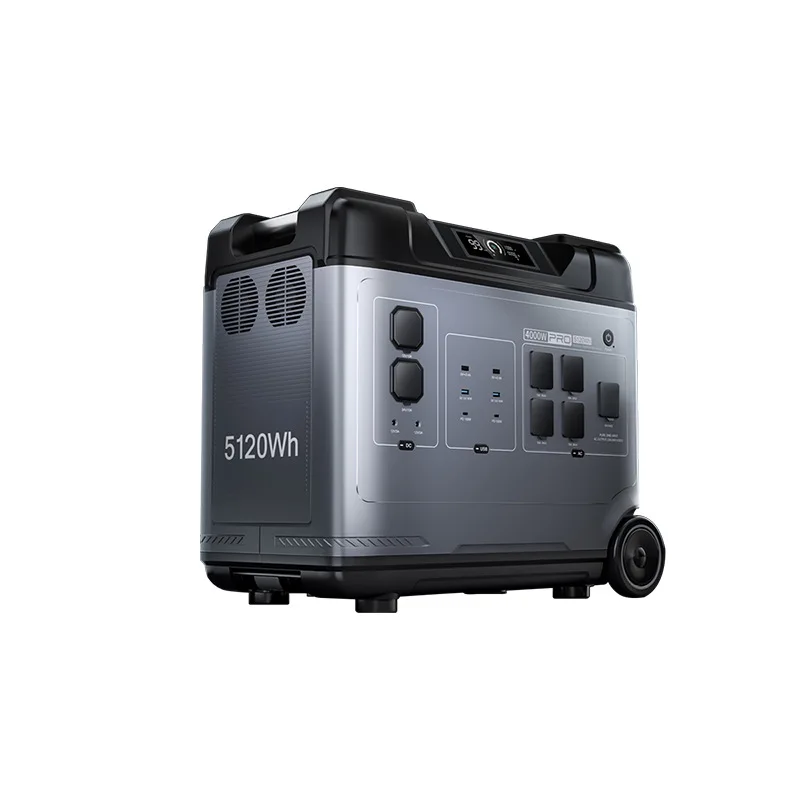Is the battery maintenance cost of portable solar battery generators high? Let's figure it out!
Factors Influencing Portable Solar Battery Maintenance Costs
Battery Type and Lifespan Considerations
The type of battery used in portable solar systems significantly affects maintenance costs, with Lithium-ion, Lead-acid, and NiMH being popular choices. Lithium-ion batteries are known for their extended lifespan, often lasting up to 10 years, which helps in minimizing long-term expenses. Lead-acid batteries, on the other hand, typically have a shorter lifespan of approximately 3-5 years, requiring more frequent replacements and resulting in higher maintenance costs. NiMH batteries fall somewhere in between, although they are less common. Choosing a more durable battery type like Lithium-ion can reduce total maintenance expenses over time.
Impact of Usage Patterns on Long-Term Costs
Portable solar battery maintenance costs are heavily influenced by usage patterns. Everyday use, as opposed to occasional use, can accelerate battery degradation, leading to increased upkeep costs. Heavy and consistent usage makes batteries prone to wear and tear faster, necessitating more frequent replacements or repairs. Experts suggest that by implementing efficient usage practices, such as regulating the discharge cycles and ensuring regular maintenance, costs can be reduced. Industry data highlights that maintaining optimal usage patterns can prolong battery life and reduce overall expenses significantly.
Environmental Factors Affecting Solar Components
Environmental conditions play a crucial role in the maintenance needs of solar components. Extreme temperatures, high humidity, and harsh weather exposure can hasten battery degradation, necessitating more frequent maintenance or replacements—particularly in outdoor solar installations. Studies from renewable energy research demonstrate that maintaining stable environmental conditions can lower the frequency of battery replacements. To mitigate these impacts, incorporating protective measures such as shelters for solar generators and monitoring systems can help preserve battery integrity and function during adverse weather conditions. These preventative actions can greatly enhance the longevity of solar equipment, thus lowering maintenance costs.
Comparing Maintenance Costs: Solar vs. Traditional Generators
Fuel-Free Operation Advantages
Solar generators provide a significant advantage in terms of cost savings due to their fuel-free operation. Traditional generators, reliant on fossil fuels like gas or diesel, incur ongoing fuel expenses that can drastically increase operating costs. In contrast, solar generators eliminate these costs entirely, leading to substantial long-term savings. For instance, with gasoline prices on the rise, traditional generator users are seeing higher expenses, impacting their overall operating budget. Furthermore, choosing solar generators also supports environmental sustainability by reducing carbon emissions, making it a more eco-friendly and cost-effective option.
Component Replacement Frequency Analysis
When considering the frequency of component replacements, solar generators come out on top compared to traditional gas generators. Solar systems generally experience lower replacement rates, with solar panels and batteries typically requiring fewer changes over their lifespan. In contrast, traditional generators often need frequent replacements of engines or other mechanical parts, which leads to higher maintenance costs over time. Therefore, the reduced replacement frequency of solar components translates directly into lower overall maintenance expenditure, making them a financially smarter choice for the long-term.
Solar Panel vs. Gas Engine Upkeep
Maintaining solar panels involves less intensive processes than those required for gas engine components. While solar panels might need periodic cleaning to maintain efficiency, gas engines require regular oil changes, filter replacements, and other tune-ups. Routine maintenance costs for a gas generator often outweigh those for a solar system. According to energy industry reports, the yearly maintenance cost for a gas generator can be double that of a solar panel system. Thus, solar panels present a more economically viable solution with simpler upkeep procedures and reduced maintenance expenses, cementing their position as a preferable energy solution.
Featured Portable Solar Generators: Performance & Upkeep
1200W Power Station: High-Efficiency Solar Charging System
The 1200W Portable Solar Power Station is crafted to optimize solar charging efficiency with its innovative design. It stands out with a 1200W pure sine wave inverter, enabling clean and stable power ideal for sensitive electronics. Its high-capacity lithium battery provides significant power reserves, reducing the dependency on frequent charging. User testimonials praise its compact design, which proves essential for outdoor activities and emergencies. The maintenance routine is minimal, largely focusing on ensuring the solar panels remain unobstructed to maximize charging capabilities. Experts consistently highlight it as one of the most reliable and cost-effective solar charging systems, allowing users to embrace renewable energy with minimal long-term maintenance costs. This portable system ensures readiness for diverse energy needs, from outdoor adventures to emergency situations.
512WH LiFePO4 Kit: Durable Battery Maintenance Features
The 512WH Solar Generator Kit is distinguished by its durable LiFePO4 battery, a technology known for its safety and extensive lifespan. Providing reliable power storage, the battery supports up to 3000 charge cycles, crucial for long-term use and dependability. Maintenance practices are straightforward, mainly involving periodic checks of battery performance. This model's design integrates high-efficiency solar panels, simplifying the solar generator upkeep process and providing a sustainable energy solution for off-grid needs. Cost-effectiveness is highlighted by the minimal expenses and efforts required to maintain its full operational capacity. Performance guarantees ensure users experience consistent power without frequent replacements or repairs, adding to its appeal as a practical energy choice.
5120WH Emergency Backup: Long-Term Cost Efficiency
Designed for extensive power needs, the 5120WH Rechargeable Backup Power Station offers exceptional long-term cost efficiency. Featuring advanced LiFePO4 battery technology, it supports up to 3000 cycles, drastically reducing replacement frequency. The robust design ensures powerful performance, providing ample power for high-demand devices. Maintenance expectations are low, primarily involving checks on battery health and their integration with solar panel setups. With reduced maintenance needs and enduring battery life, this solar generator represents a cost-effective solution for emergency backup or off-grid living. Insights from energy transition experts affirm its role in sustainable energy storage, noting it’s a reliable choice for reducing traditional generator dependency.
Extending Lifespan: Maintenance Tips for Solar Panels & Batteries
Optimal Cleaning Techniques for Solar Arrays
Maintaining solar panels involves regular cleaning to maximize efficiency and prolong lifespan. The best practice is to use soft brushes or cloths with non-abrasive soap and water to remove dust, pollen, and bird droppings that can obstruct sunlight. In dry and dusty climates, cleaning should occur more frequently, often every few weeks, while in wetter climates, natural rain may suffice, reducing the manual cleaning frequency to about twice a year. Data reveals that solar panels maintained with regular cleaning can experience a 20% or more increase in energy output compared to neglected panels, emphasizing the importance of this upkeep.
Battery Storage Best Practices
Proper storage of solar batteries greatly influences their longevity and efficiency. Ideally, batteries should be stored in environments where temperature and humidity are carefully controlled—around 77°F (25°C) with low humidity levels being optimal. This prevents thermal degradation and moisture damage. By maintaining these conditions, battery life can be extended significantly, which reduces the frequency and cost of replacements. Reports indicate that following best storage practices can enhance battery lifespan by nearly 50%, providing a substantial cost benefit over time.
Preventing Degradation in Home Solar Power Systems
Effectively preventing component degradation in home solar power systems involves strategic monitoring and maintenance. Early detection of performance declines through regular system checks is crucial. Key indicators of degradation include reduced energy output and visible damage to panels or batteries. Transitioning to routine inspections can highlight these issues before they escalate. Experts recommend maintenance schedules that align with seasonal changes to address climate-related stresses, thereby ensuring the durability and performance of both batteries and solar panels, ultimately safeguarding the home solar power system from premature aging.
Reduced Operational Costs Compared to Grid Power
The long-term financial benefits of solar energy systems are significant when compared to traditional grid power. Solar energy provides reduced operational costs, as it harnesses the sun's energy, which is both renewable and free. Consequently, this can lead to substantial savings over time. A study from the National Renewable Energy Laboratory highlights that households switching to solar energy can save upwards of $10,000 over a 20-year period, depending on location and energy usage. Additionally, government incentives, such as tax credits and rebates, are available in many regions to promote solar adoption, enhancing the return on investment (ROI) for users.
Homeowners may receive a 22% federal tax credit for solar power installations, a benefit designed to offset the initial costs and accelerate payback periods. Not only does solar energy offer financial savings, but it also contributes to environmental sustainability by reducing reliance on non-renewable resources and decreasing carbon footprints. This combination of economic and ecological incentives makes solar energy systems a sound investment choice in the long term.
ROI Analysis for Outdoor Solar Implementations
Conducting a return on investment (ROI) analysis for outdoor solar implementations is crucial to understanding their financial viability. Initial costs for solar installations can be significant, but they are often offset by substantial long-term savings. For instance, integrating outdoor solar lights in public spaces or residential areas can eliminate the need for electricity from the grid, ultimately reducing utility bills significantly. A comprehensive ROI analysis should include expected savings, such as reduced electricity bills and lower maintenance costs, and compare them against initial expenditures and potential government incentives.
From a financial expert's perspective, investments in outdoor solar setups are promising, especially when considering the decreasing costs of solar tech and improving efficiency of panels. The overall cost-benefit of implementing such systems depends heavily on local solar irradiance levels and electricity tariffs. Yet, even in regions with moderate sunlight, solar investments are often favorable. Expert analysis predicts that as technology continues to advance and costs decrease, solar energy systems will only become more economically attractive.
Integrating Solar Water Heaters with Generator Systems
Integrating solar water heaters with existing generator systems represents a potent opportunity for both cost savings and enhanced efficiency. This combination allows for synergistic use of solar energy and existing infrastructure to maximize heating efficiency while minimizing dependency on non-renewable resources. Case studies have shown that households utilizing solar water heaters integrated with generator systems can reduce their water heating costs by up to 50% compared to those relying solely on traditional energy sources.
Furthermore, such integration not only offers financial benefits but also aligns with the broader trend towards sustainable energy solutions. Experts in the renewable energy domain suggest that as the global push for sustainable living continues, the integration of diverse renewable technologies will become more prevalent. This trend is likely to drive innovation in system compatibility and efficiency, making solar-powered systems a key player in the future of energy management.
 EN
EN
 AR
AR FR
FR DE
DE IT
IT PL
PL PT
PT RU
RU ES
ES SW
SW HA
HA



